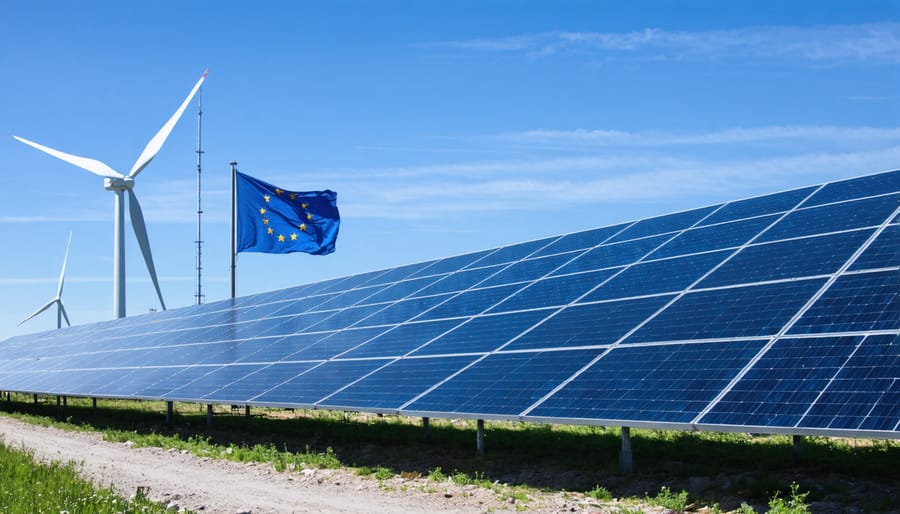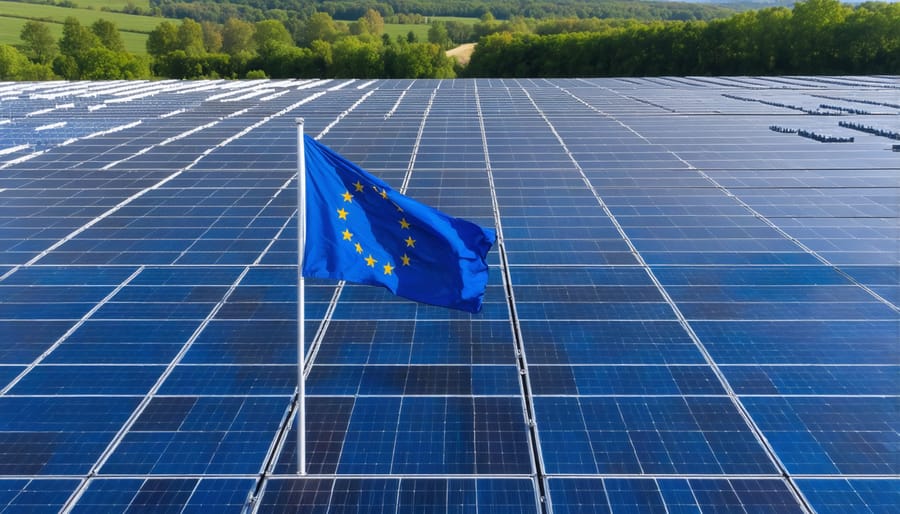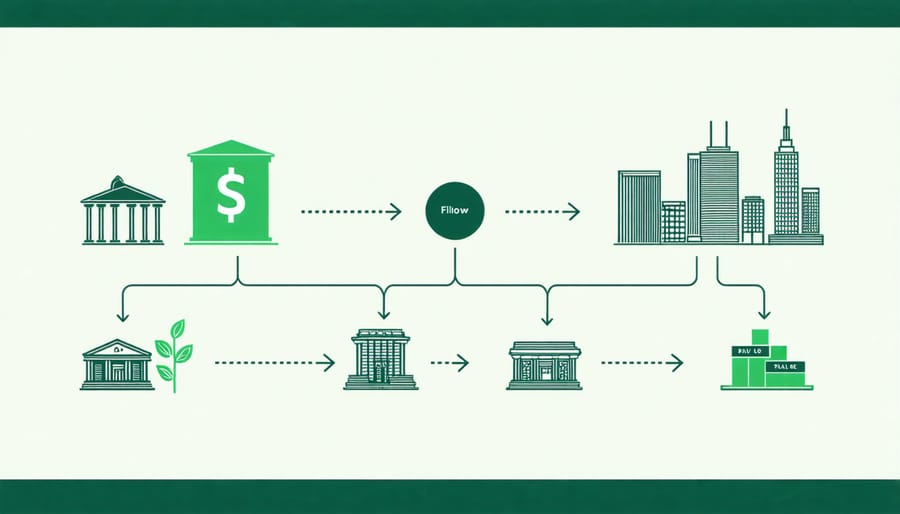How European Energy Policy is Transforming Solar Investment Reality

The intersection of energy policy and technological innovation stands at the heart of Europe’s transition to a sustainable future. As nations grapple with climate change imperatives and energy security challenges, strategic policy frameworks are reshaping how we develop, finance, and implement clean energy solutions. From pioneering solar installations in Germany to offshore wind innovations in Denmark, European countries are demonstrating how targeted policy measures can accelerate technological breakthroughs while creating economic opportunities.
Recent developments in energy storage systems, smart grid technologies, and renewable integration have created unprecedented possibilities for sustainable energy transformation. However, the success of these innovations heavily depends on robust policy frameworks that incentivize research, development, and market adoption. Through carefully structured financing mechanisms, regulatory support, and cross-border collaboration, European policymakers are creating an ecosystem where groundbreaking energy technologies can flourish.
This dynamic interplay between policy and innovation not only drives environmental progress but also strengthens Europe’s position as a global leader in sustainable energy solutions. For businesses, homeowners, and industries, understanding this relationship is crucial for making informed decisions about energy investments and technological adoption in an evolving regulatory landscape.
The Evolution of European Energy Innovation Policy
Current Policy Landscape
The current policy landscape for energy innovation in Europe is experiencing a significant transformation, driven primarily by the European Renewable Energy Directive. This framework sets ambitious targets for renewable energy adoption, mandating that member states achieve at least 32% renewable energy in their total energy mix by 2030.
Supporting policies include feed-in tariffs, which guarantee fixed payments for renewable energy producers, and green certificates that create market incentives for clean energy generation. The Innovation Fund, Europe’s flagship funding programme, provides substantial financial support for low-carbon technologies and innovative renewable energy projects.
At national levels, countries have implemented diverse support mechanisms. Germany’s renewable energy law (EEG) continues to serve as a model for effective policy design, while France’s solar tender system has successfully driven down costs while maintaining quality standards. The Netherlands has introduced innovative approaches through their SDE++ scheme, which supports both renewable energy production and energy-saving technologies.
Recent policy developments focus on integration of storage solutions, grid modernization, and support for prosumer initiatives. These policies increasingly emphasize the importance of energy communities and citizen participation in the renewable energy transition, creating a more inclusive and democratic energy system.

Technology-Specific Support Mechanisms
The European Union has developed targeted support mechanisms specifically designed to accelerate the adoption of solar and energy storage technologies. These mechanisms operate through a multi-layered approach, combining direct financial incentives with regulatory frameworks that facilitate market growth.
For solar technology, key support measures include feed-in tariffs that guarantee fixed payments for electricity generation, investment grants covering up to 30% of installation costs, and streamlined permitting processes. Many member states have implemented additional measures such as solar mandate policies for new buildings and renovation projects, ensuring continuous market development.
Energy storage solutions benefit from dedicated funding programs that encourage innovation and deployment. The EU’s Innovation Fund specifically allocates resources to battery storage projects, while national schemes offer tax incentives for residential and commercial storage installations. These mechanisms recognize storage as a crucial element in achieving grid stability and maximizing renewable energy utilization.
Notable initiatives include the Solar Energy Partnership under the Strategic Energy Technology Plan, which coordinates research efforts and accelerates commercial deployment. Additionally, the European Battery Alliance has created a supportive ecosystem for storage technology development, fostering collaboration between industry stakeholders and research institutions.
Regional authorities often supplement these mechanisms with localized support schemes, creating a comprehensive framework that addresses specific geographical and market conditions while maintaining alignment with broader European energy transition goals.
Innovative Financing Models
Public-Private Partnerships
Public-private partnerships (PPPs) have emerged as a cornerstone of energy innovation in Europe, bridging the gap between governmental initiatives and private sector expertise. These collaborative frameworks enable the sharing of resources, risks, and rewards while accelerating the deployment of renewable energy solutions. Through various solar financing options and joint ventures, PPPs create robust platforms for technological advancement and market expansion.
The European Union’s Innovation Fund demonstrates this approach effectively, combining public funding with private investment to support large-scale renewable energy projects. This model has proven particularly successful in developing solar infrastructure, where municipalities partner with technology providers and financial institutions to implement community-scale installations.
Key benefits of these partnerships include:
– Risk mitigation through shared responsibility
– Access to diverse funding sources
– Accelerated project implementation
– Enhanced technical expertise
– Improved project sustainability
Notable examples include the Solar Europe Initiative, where public research institutions collaborate with private manufacturers to advance photovoltaic technology. Similarly, the European Green Deal’s innovation projects leverage PPPs to scale up renewable energy solutions across member states.
These partnerships also facilitate knowledge transfer between academic institutions and industry players, ensuring that theoretical research translates into practical applications. Local authorities benefit from private sector efficiency while maintaining public oversight of essential energy infrastructure.
For maximum effectiveness, successful PPPs typically incorporate:
– Clear governance structures
– Transparent risk allocation
– Defined performance metrics
– Long-term commitment frameworks
– Community engagement strategies
This collaborative approach continues to drive innovation while making renewable energy more accessible and affordable for European communities.

Green Bonds and Sustainable Finance
Green bonds have emerged as a powerful financial instrument in Europe’s transition to sustainable energy, offering dedicated funding channels for renewable energy projects and clean technology initiatives. These specialized bonds enable investors to support environmentally beneficial projects while earning returns, creating a win-win scenario for both financial markets and climate action.
The European Union has taken a leading role in sustainable finance, with the EU Green Bond Standard setting clear criteria for what constitutes a green investment. This framework has helped mobilize significant capital for energy innovation projects, particularly in solar technology deployment and energy efficiency improvements.
Market data shows remarkable growth in green bond issuance across Europe, with annual volumes exceeding €500 billion in recent years. Local governments, financial institutions, and energy companies are increasingly using these instruments to fund large-scale renewable energy installations and smart grid development projects.
Sustainable finance extends beyond green bonds to include sustainability-linked loans, green mortgages, and energy efficiency financing programs. These instruments often feature preferential terms for projects meeting specific environmental criteria, making them attractive for businesses and homeowners investing in clean energy solutions.
For European property owners and businesses, these financial mechanisms provide accessible funding options for solar installations and energy efficiency upgrades. Many programs offer reduced interest rates, extended repayment periods, and technical assistance throughout the project lifecycle.
The integration of environmental, social, and governance (ESG) criteria into investment decisions has further strengthened the sustainable finance ecosystem, ensuring that funded projects deliver both environmental benefits and strong financial returns. This approach has helped mainstream green financing and accelerate the adoption of innovative energy technologies across Europe.
Technology Integration and Policy Impact
Smart Grid Integration
Smart grid integration represents a cornerstone of Europe’s energy transformation, combining advanced digital technologies with traditional power infrastructure to create a more resilient and efficient energy system. The European Union has implemented comprehensive policy frameworks that support the deployment of smart grid technologies, including the Smart Grid Action Plan and dedicated funding through the Connecting Europe Facility.
These policies encourage the adoption of smart meters, automated distribution systems, and real-time monitoring capabilities. Member states are required to ensure that at least 80% of consumers have intelligent metering systems by 2024, supported by various national incentive schemes and regulatory frameworks.
The integration process particularly benefits renewable energy sources by enabling better management of variable power generation. Grid operators can now balance supply and demand more effectively, reducing waste and improving overall system stability. For businesses and homeowners, smart grid technologies enable dynamic pricing models and demand-response programs, offering opportunities to reduce energy costs while contributing to grid stability.
Key policy measures include standardization requirements for interoperability, cybersecurity protocols, and data protection frameworks. Financial support mechanisms, such as the Innovation Fund and Regional Development Fund, help offset initial implementation costs for both utilities and end-users. These initiatives are complemented by research and development programs that focus on advancing grid automation, energy storage solutions, and consumer engagement platforms.

Energy Storage Solutions
The evolution of energy storage solutions represents a critical cornerstone in advancing renewable energy technologies across Europe. Current policy frameworks are actively shaping the development and implementation of battery technologies, with particular emphasis on grid-scale storage solutions and residential energy systems.
The European Union’s Battery Alliance initiative has established comprehensive support mechanisms for research, development, and deployment of advanced storage technologies. This includes targeted funding programs for lithium-ion battery manufacturing, support for emerging technologies like solid-state batteries, and incentives for integrating storage solutions with existing renewable energy installations.
Member states have implemented complementary policies, including tax incentives for battery storage installations, streamlined permitting processes, and grid connection protocols that facilitate the integration of storage systems. These frameworks particularly benefit homeowners and businesses investing in solar-plus-storage solutions, offering enhanced energy independence and grid stability.
Notable policy measures include capacity market mechanisms that reward storage operators for grid services, regulatory frameworks supporting virtual power plants, and standardization efforts ensuring compatibility across European markets. These initiatives are complemented by research grants focused on improving battery efficiency, longevity, and sustainability, while reducing production costs through technological innovation.
The comprehensive approach to storage policy has created a robust ecosystem supporting both manufacturers and end-users, positioning Europe as a leader in energy storage innovation.
Project Implementation Success Stories
The European Union’s commitment to energy innovation has yielded remarkable results across multiple member states. In Denmark, the Samsø Island project stands as a testament to successful solar project implementation combined with wind energy, transforming an entire community into a carbon-neutral territory within just a decade.
Portugal’s solar auction program demonstrates how well-designed policies can drive technological adoption while reducing costs. The 2019 auction achieved record-low solar electricity prices of €14.76/MWh, making it a blueprint for other European nations. The program’s success has attracted over €800 million in foreign investment and created thousands of local jobs.
In Germany, the KfW100 program has enabled over 400,000 building renovations with energy-efficient technologies. This initiative combines low-interest loans with technical assistance, resulting in average energy savings of 50% per building. The program’s structure has been adopted by several other EU countries, showcasing the power of well-designed financing mechanisms.
The Netherlands’ SDE++ scheme exemplifies how innovation policy can evolve to meet changing needs. By expanding from purely renewable energy to broader CO2 reduction technologies, the program has facilitated the deployment of hybrid heating systems and industrial electrification projects, demonstrating the importance of flexible policy frameworks in driving energy transition.
The landscape of energy innovation policy and technology continues to evolve rapidly across Europe, driven by ambitious climate goals and the pressing need for sustainable energy solutions. As we’ve explored, the successful implementation of renewable energy technologies, particularly solar power, depends on the intricate interplay between policy frameworks, financing mechanisms, and technological advancement.
The European Union’s commitment to achieving carbon neutrality by 2050 has catalyzed unprecedented investment in energy innovation, creating a fertile ground for technological breakthroughs and market expansion. This commitment is reflected in the comprehensive policy frameworks that support both research and development initiatives and practical implementation strategies.
Looking ahead, several key trends are likely to shape the future of energy innovation in Europe. The continued reduction in solar technology costs, coupled with improvements in energy storage solutions, will make renewable energy increasingly accessible to homeowners and businesses. Smart grid integration and digitalization will play pivotal roles in optimizing energy distribution and consumption patterns.
The success of future energy initiatives will largely depend on maintaining the momentum of public-private partnerships and ensuring consistent policy support. The European Green Deal serves as a cornerstone for this development, providing both the vision and practical mechanisms needed for sustainable energy transformation.
For homeowners and businesses considering solar energy adoption, the current landscape offers unprecedented opportunities. The combination of mature technologies, established financing options, and supportive policies creates a favorable environment for investment in renewable energy solutions.
As we move forward, the focus will increasingly shift toward integrated energy solutions that combine multiple technologies and approaches. This holistic approach, supported by innovative policies and financing mechanisms, will be crucial in achieving Europe’s energy transition goals while ensuring economic sustainability and energy security for all stakeholders.
The path ahead requires continued commitment to innovation, policy refinement, and collaborative effort across all sectors. With the foundation already laid through existing frameworks and technologies, Europe is well-positioned to lead the global energy transition and create a sustainable energy future for generations to come.
Leave a Reply